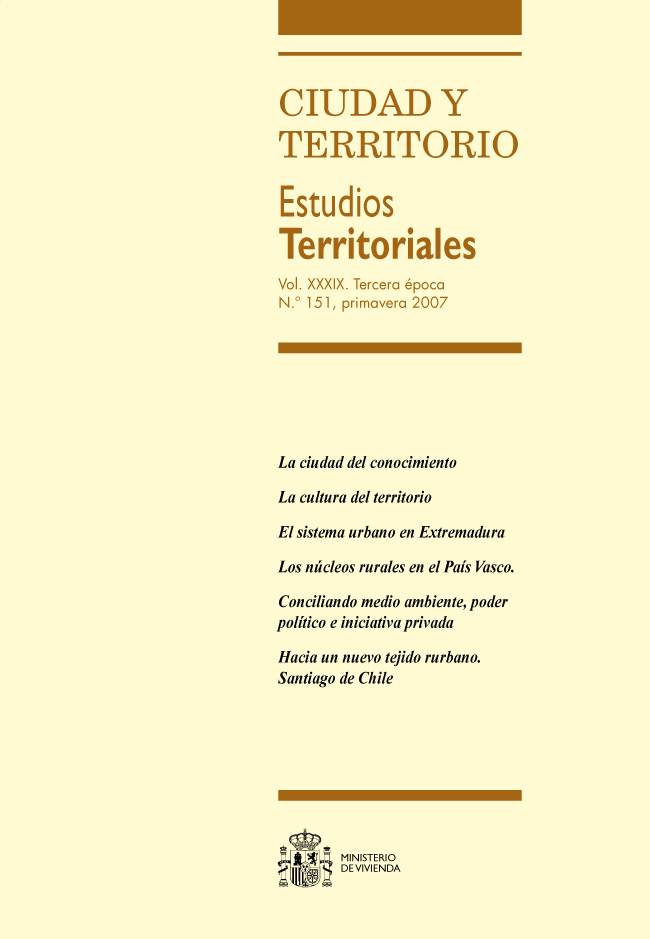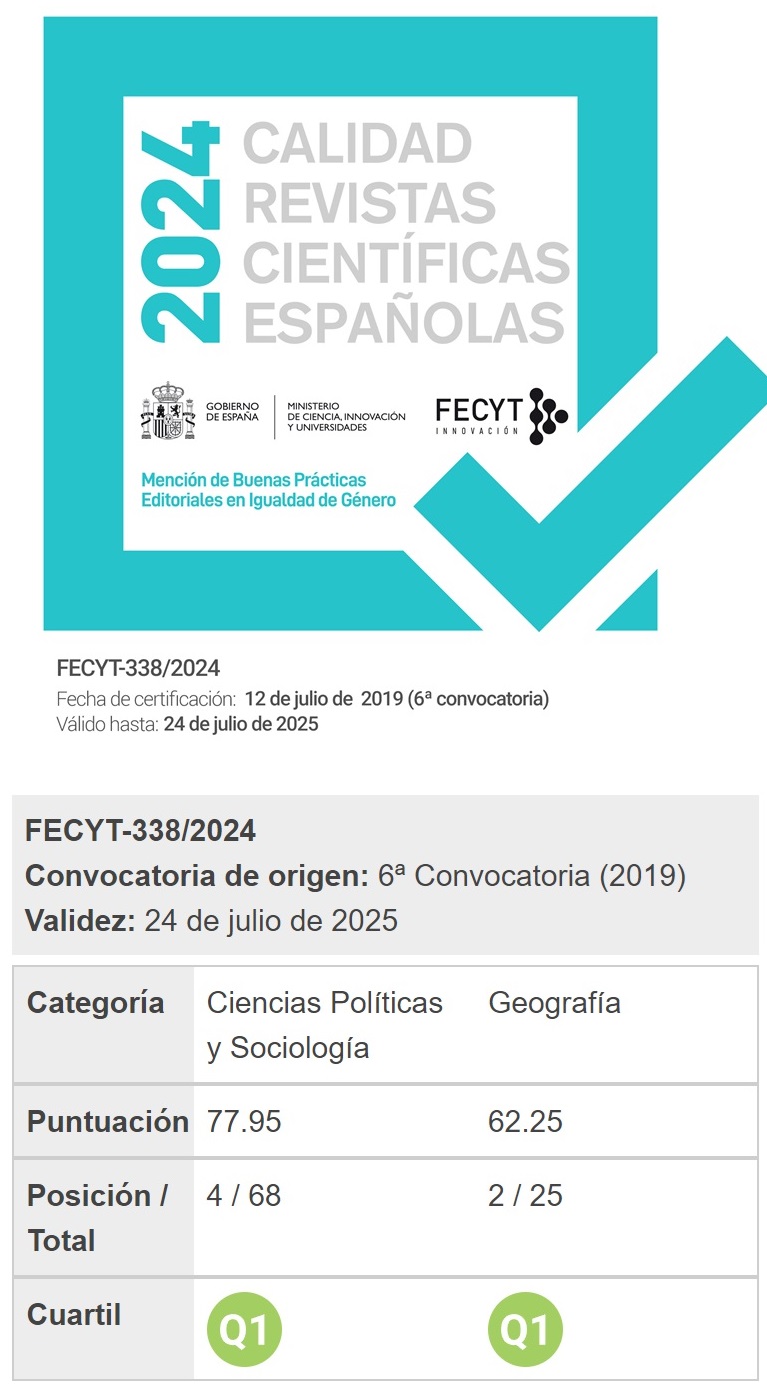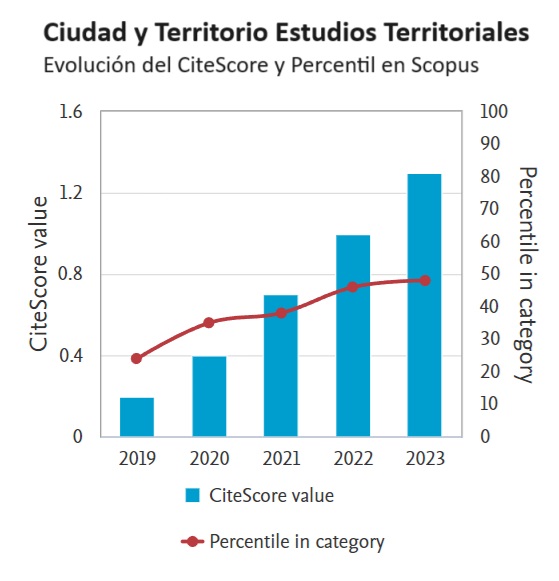El sistema urbano en Extremadura y su influencia en el desarrollo rural
Palabras clave:
Estructura urbana, política territorial, redes urbanas, sistemas urbanosResumen
La cohesión y los desequilibrios territoriales han sido temas de constante preocupación en el
seno de la UE. En este contexto entran a desempeñar un papel fundamental las ciudades, en la concepción
de un modelo territorial policéntrico, de complementariedad y de cooperación en red, resultado de los esfuerzos
de los Ministros de Ordenación del Territorio a lo largo de la década de los noventa, que culminará en la Estrategia
Territorial Europea (ETE). Tanto en España como en la mayor parte de las Comunidades, este documento
no tiene un reflejo práctico y real, al menos por el momento. Se analizará el sistema urbano de Extremadura,
para lo cual se aplicará un Análisis Multivariante para determinar la estructura y el rango
urbano, y una encuesta —igual a la que realizó el profesor Casas Torres en 1967— para delimitar las áreas
de influencia y analizar su evolución en el último tercio del siglo XX. Una vez definido el sistema urbano
extremeño, se realizará una aproximación a la influencia de estas ciudades en el desarrollo rural y en la
estabilización de su población en la última década.
Descargas
Descargas
Publicado
Cómo citar
Número
Sección
Licencia
Derechos de autor 2007 José L. Gurría Gascón

Esta obra está bajo una licencia internacional Creative Commons Atribución-NoComercial-SinDerivadas 4.0.
Sin perjuicio de lo dispuesto en la legislación vigente sobre Propiedad Intelectual, y conforme a la misma, el/la los/las autor/a/es/as que publiquen en CyTET cede/n a título gratuito, de modo no exclusivo y sin límite temporal al Ministerio de Transportes, Movilidad y Agenda Urbana los derechos para difundir, reproducir, comunicar y distribuir en cualquier formato actual o futuro, en papel o electrónico, la versión original o derivada de su obra bajo licencia de Creative Commons Reconocimiento-NoComercial-SinObraDerivada 4.0 Internacional (CC BY-NC-ND 4.0), así como para incluir o ceder a terceros la inclusión de su contenido en índices, repositorios y bases de datos nacionales e internacionales, con referencia y reconocimiento en todo caso de la autoría del mismo.
Además, al realizar el envío, el/la los/las autor/a/es/as declara/n que se trata de un trabajo original en el que se reconocen las fuentes que han sido utilizadas en su estudio, comprometiéndose a respetar la evidencia científica y a no modificar los datos originales para verificar o refutar una hipótesis de partida; que el contenido esencial del mismo no ha sido publicado previamente ni se publicará en ninguna otra obra o revista mientras esté en proceso de evaluación en la revista CyTET; y que no se ha remitido simultáneamente a otra publicación.
Los autores deben firmar un Formulario de Cesión de Derechos, que les será enviado desde la Secretaría de CyTET una vez se acepte su artículo para ser publicado.
Con el objetivo de favorecer la difusión del conocimiento, CyTET se adhiere al movimiento de revistas de Open Access (OA) y entrega la totalidad de sus contenidos a diversos índices, repositorios y bases de datos nacionales e internacionales bajo este protocolo; por tanto, la remisión de un trabajo para ser publicado en la revista presupone la aceptación explícita por parte del autor/a de este método de distribución.
Se anima a las/os autoras/es a reproducir y alojar sus trabajos publicados en CyTET en repositorios institucionales, páginas web, etc. con la intención de contribuir a la mejora de la transferencia del conocimiento y de la citación de dichos trabajos.








 Enlace a CyTET en Linkedin
Enlace a CyTET en Linkedin